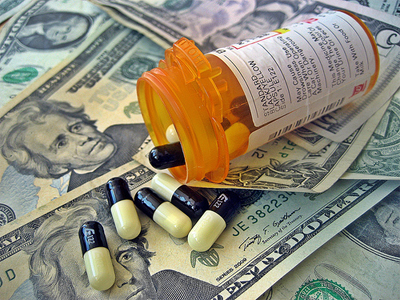People who don’t have insurance often risk their health by avoiding health care because paying out-of-pocket for care to most providers is simply unaffordable. And if you have a health condition that requires prescriptions, not having insurance can become a health crisis.
Frankly, between you and me, the symbiosis between the health insurance and the health care industry has produced a monster. This beast is the high cost of health care. It’s like heroin, this money that the health care industry gets from the insurance companies. Have you ever looked at the details of a doctor’s or hospital bills? What strikes me is the number of “write-offs” for contracted payments, the difference between what the doctor or hospital charges, and the amount of money that the health insurance company is willing to pay. My question is this. Why are doctors so willing to take a pay cut? If your employer came to you and said, “Well, if you do this work, I will only pay you 75% of your pay?” wouldn’t you tell him “forget it!” Of course you would.
In the beginning of the health insurance industry, most health insurances were for catastrophic hospital expenses. Doctor visits were affordable and didn’t need insurance. As the insurance industry crept its way into doctors’ offices the percentage of a worker’s weekly pay it took to pay for the a doctor’s visit increased. In 1962 the average doctor’s visit was $5 a visit. Forget about inflation or cost of living increases. The median yearly salary in 1962 was $6,000 so a $5 visit consumed a little less than 4.5% of a week’s pay. Fast forward to 2012. The average doctor’s visit is $102, without insurance, though the last time I saw that rate with my doctors was 5 years ago. Currently, the state’s median income is $67,034 though many people earn a great deal less. That would put a doctor’s visit at 8% of a family’s weekly salary, almost double of the 1962 rate.
It is my personal belief that it is incumbent upon all of us to take the health care crisis in hand and be better shoppers for our health care needs.
Recently I changed my health care provider to Community Health Center, who has a number of offices throughout the state. Even at the top of the sliding scale tier, for the uninsured, office visits for a medical doctor are $55 and for dental care (one stop shopping, who wouldn’t love that!) $37 both of which are separate line items in most doctor’s offices. The doctor visits include blood work and the dental visits includes x-rays. Considering that I used to pay monthly insurance premiums of $650 whether or not I went to a doctor for my employer sponsored family plan plus $30 dollar co-pays for my family doctor, and $40 for specialists, (including dentists) I am saving a boat load of money. This option may not be for everyone, but it is worth checking out.
I am researching options for insurance for hospital care, and I talk more about that latter.
For prescriptions, there are a number of options out there. Except for the most expensive, brand name prescriptions there are a number of generic options for many medical conditions. Discuss with your health care provider if any of your medications can be covered by a generic brand. Then start shopping!
Walmart has generics for $4 for a 30 day supply and $10 for 90. Go here for their list.
Walgreens has generics for $9.99 for a 30 day supply and $12 for a 90 day supply with registration for the Rx Prescription Plan. The plan itself cost $20 per year for an individual and $35 a year for families. This is their list of drugs available at these prices.
Price Chopper has an Rx Prescription Drug Plan for people without insurance. The plan is free, only registration is required. Their generic drug program features $3 for a 30 day supply.
Stop and Shop has generic drugs for $9.99 for up to a 90 day supply when you use your Stop and Shop card. Their drug list is here, and unlike other websites are very pro-active in showing what new generic drugs they add to their list.
If the drug you need isn’t on any of these lists, call the different pharmacies and do so some comparative price shopping. If enough people do this, and take up pharmacy staff time, it just might prod the various pharmacies to post their entire price list online to make it easier to shop for the best prices.
This list isn’t exhaustive, but meant to encourage you to research the best options for you and your family. There is never a need to go without health care or prescriptions because of the high cost of health care. Demand lower health care costs by price shopping. Remember, saving well is the best revenge!
Image published under a Creative Commons License as issued by user Images_of_Money on Flickr.
